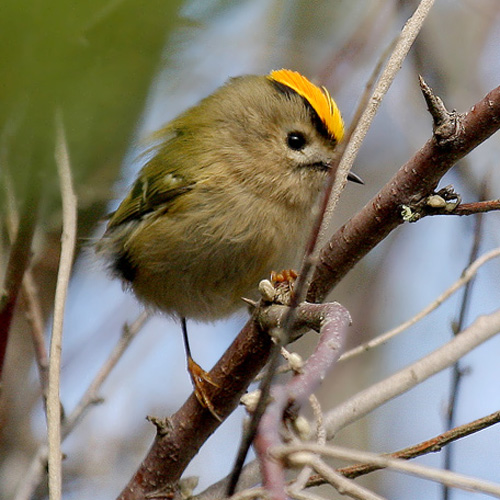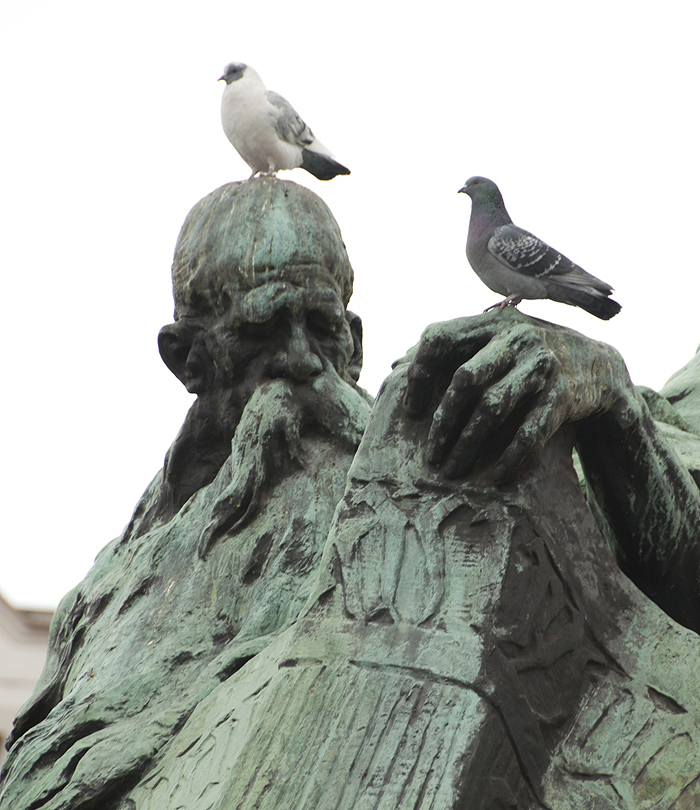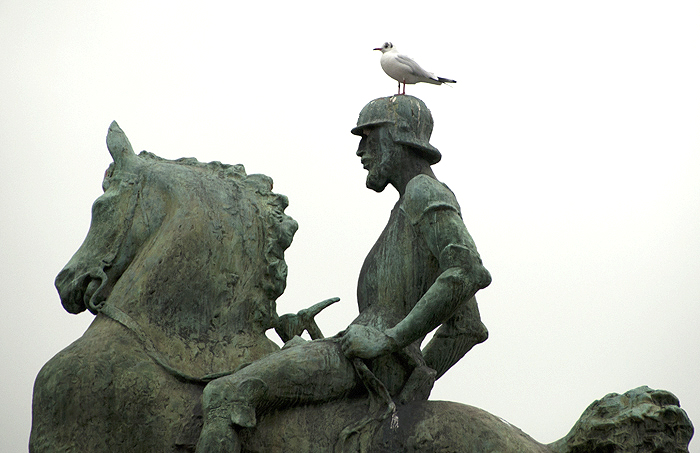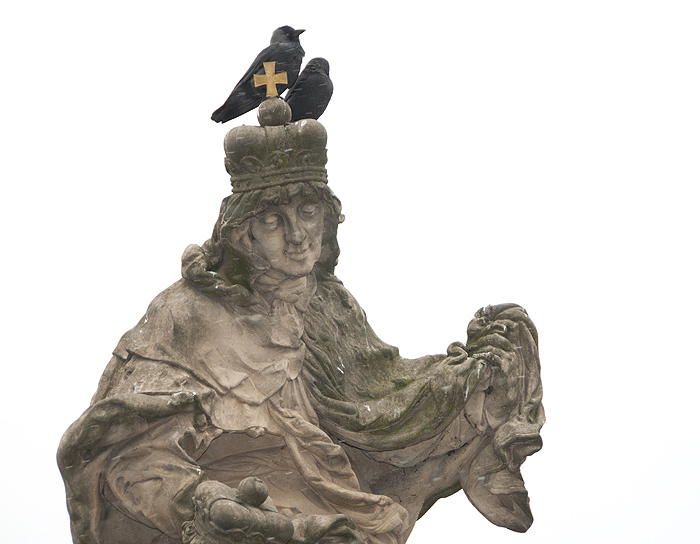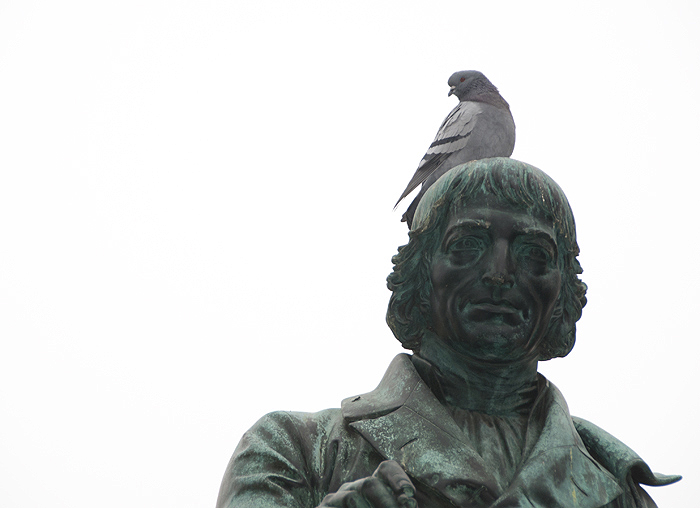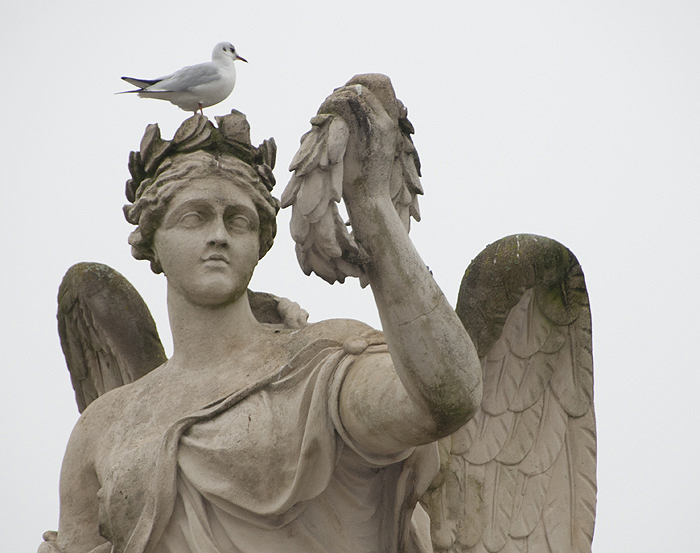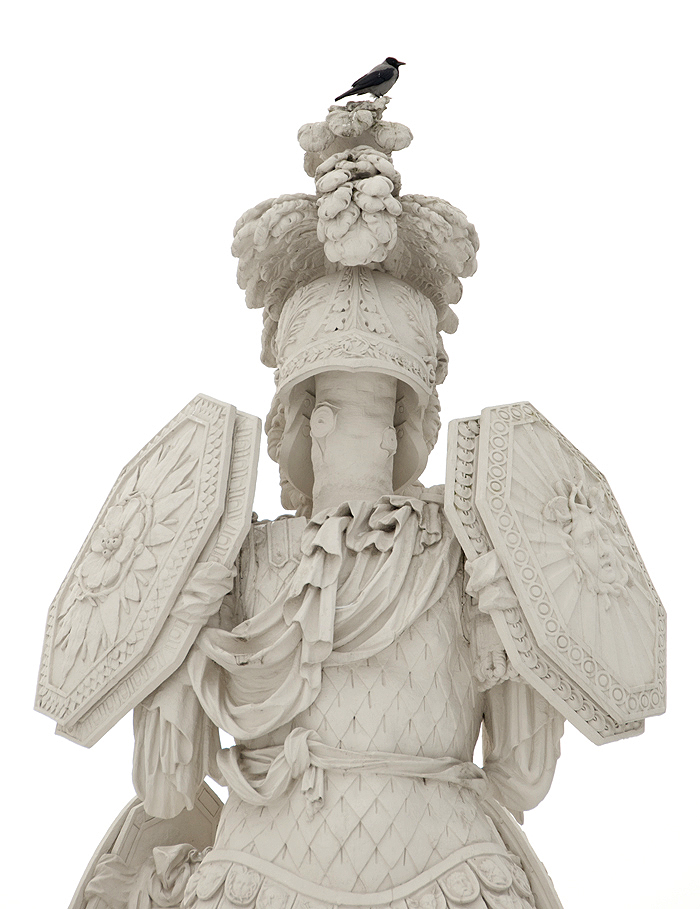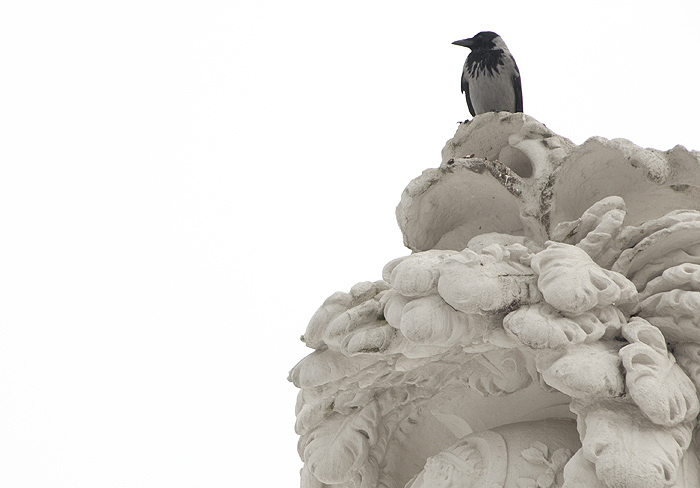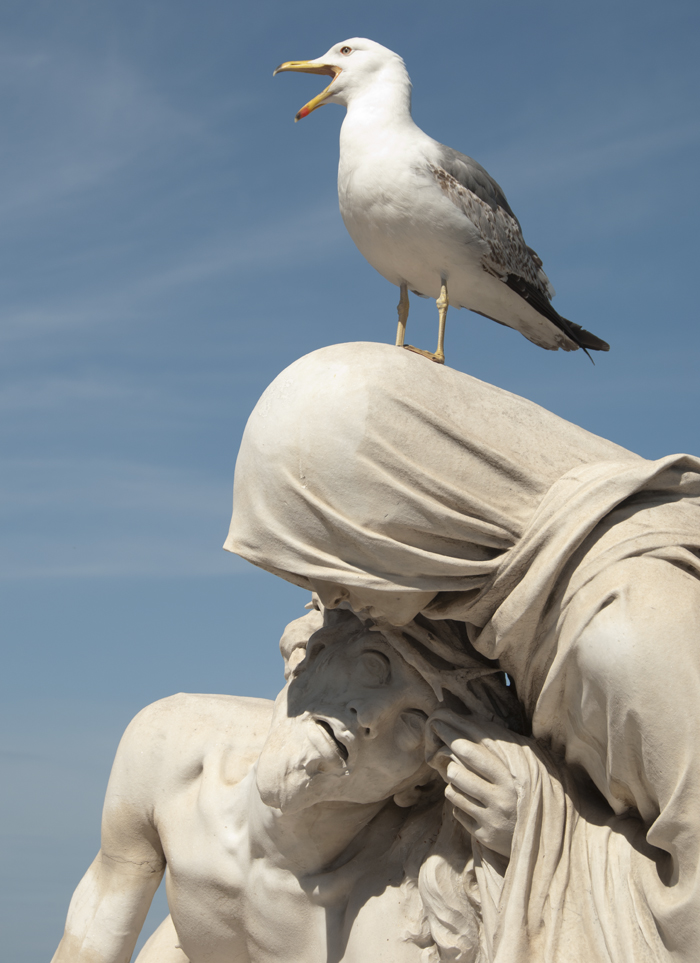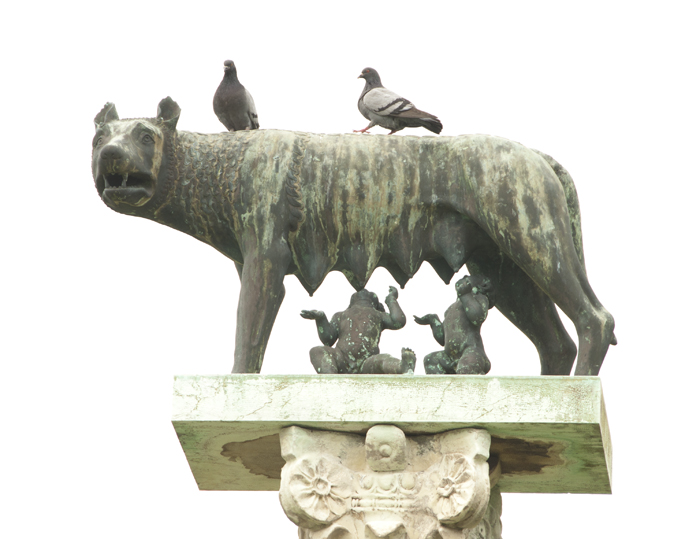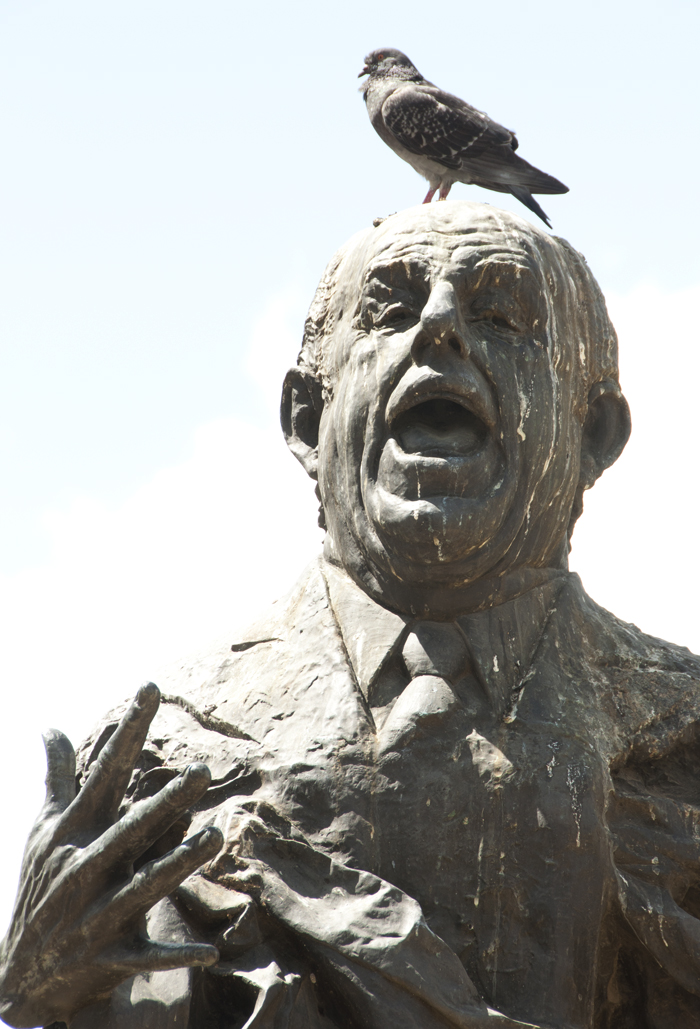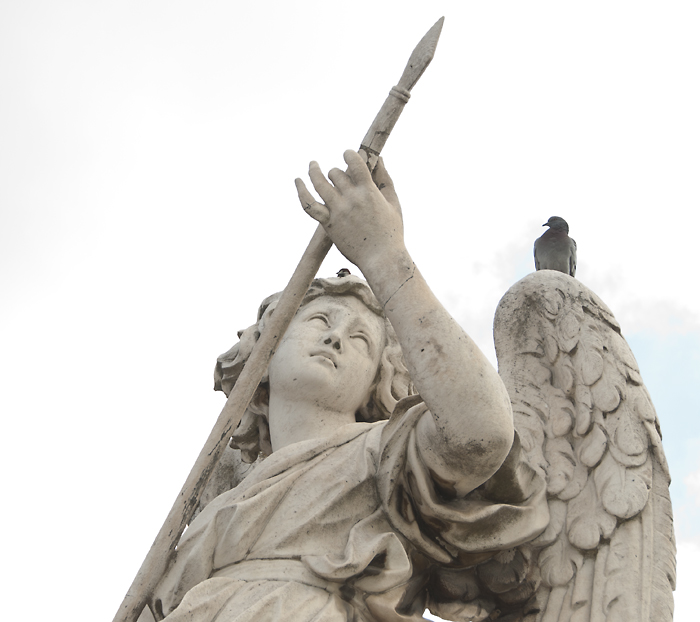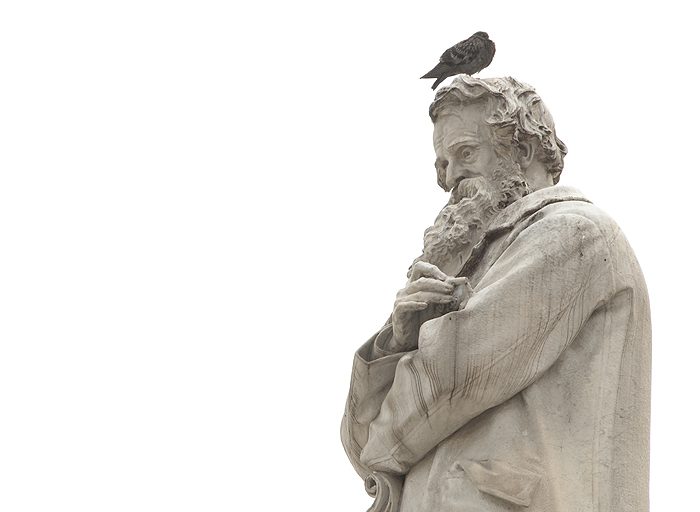There you are: jet-lagged and in a park near your hotel, before dawn, binoculars in hand. It’s the beginning of your European vacation and your family is still passed out upstairs.
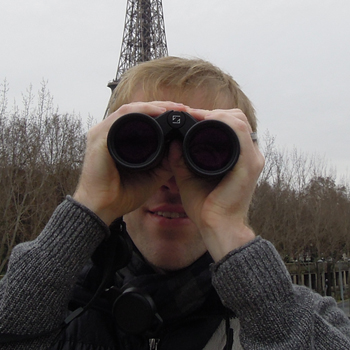
How nice of you to let them sleep.
As the morning begins to brighten in Paris (or maybe London, or Berlin) an unfamiliar dawn chorus begins to emerge from the greenery around you.
Maybe you studied your European field guide a little on the flight over but, as you know, every bird in the world has an unique vocalization and knowing that Common Chiffchaff and Willow Warbler are differentiated by leg color is of little use to you now, in this dim light.
Are you new to “birding by ear”? No worries, it’s never been easier.
Using reference CD’s and MP3’s from websites like Xeno-canto.org, create a playlist of the most common birds in your area. Play it on your commute to work, at your computer, or at the gym, until the songs become familiar to your ears. Now, when you next encounter the dawn chorus in full force, you can mentally sort the sounds you recognize, and focus on the ones you don’t. Chase down a couple new sounds and, once you visually identify the species, add them to your playlist.
You are now developing a mental reference library for bird sounds, and you might be surprised at how quickly new sounds will “catch.” You’ll remember new sounds by comparing them against the catalog you’re building. For example, you’ll note that the song of Purple Finch has the same liquid-like quality of a House Finch but it sings shorter, distinct phrases and lacks the upslurred end that House Finches often broadcast.
“Well, that’s helpful and all,” you interrupt, “but I’m still in Europe and I have no idea what I’m hearing.”
Don’t worry—this technique can still help elsewhere in the world. I’ve compiled a short reference of most common urban birds in Europe to help you prepare for your European vacation. Have a listen: some may sound quite similar to common birds back home.
Common Blackbird
May remind you of: American Robin
Blackbirds don’t have “yellow heads” or “red wings” in Europe, in fact this plain black bird with a yellow bill is in the same genus as the American Robin: Turdus. Appropriately, most of its vocalizations, from song to alarm call, are reminiscent of the vociferous songster you likely have in your backyard, albeit a bit more languorous, inebriated even.
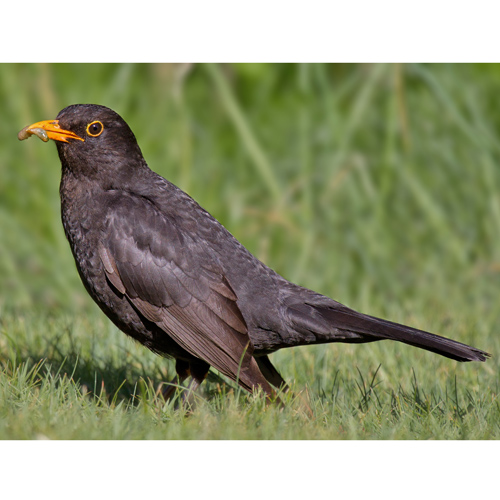
© Andreas Trepte |
Song Thrush
May remind you of: Northern Mockingbird
Another member of the turdus genus, the Song Thrush more closely resembles our own Swainson’s or Hermit Thrush. But once it opens its beak, expect a song similar to a Northern Mockingbird: short, distinct, discordant phrases repeated in two’s and three’s.
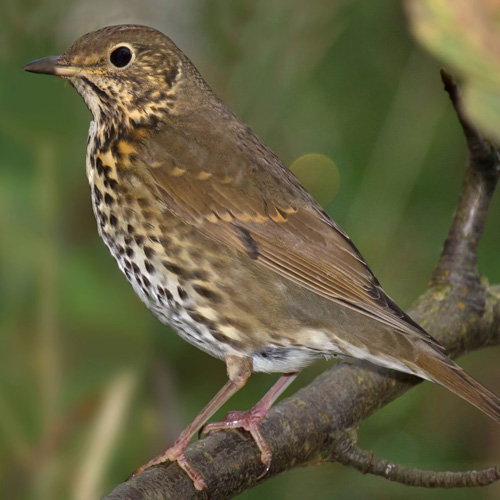
© Andreas Trepte |
Eurasian Wren
May remind you of: Winter/Pacific Wren
Hear a sweet, frantic song similar to your Winter Wrens back home? Well, up until 2010, it was the same species. But the wren you hear now—the Eurasian Wren—is its own species, and the only wren found outside the Americas.

© Andreas Trepte |
Common Chaffinch
May remind you of: House Finch
This boisterous singer can be heard in green-spaces throughout urban Europe. The song is crisp, “chippy”, and descends in pitch, but not in strength. When I first arrived in Paris, I likened it to the song of a House Finch, a common urban vocalist in North America. Their call—a “pink-pink”—is also quite distinctive (the recording below features the song in the foreground, with the call in the background).
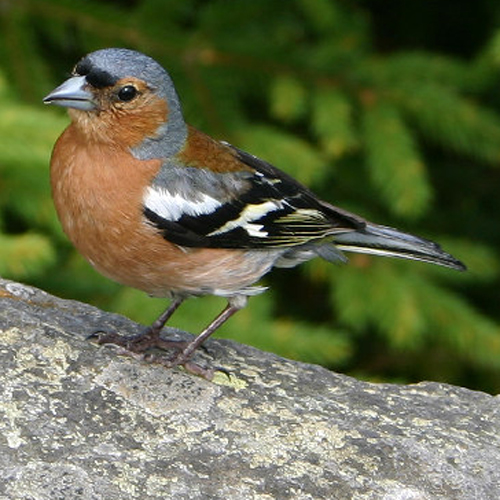
© Ian Cleland |
Goldcrest
May remind you of: Golden-crowned Kinglet
It sure looks like a Golden-crowned Kinglet (it’s in the same genus) and yup, it sounds like one, too. If you are near conifers and hear some small twittering coming from the canopy, you can bet it’ll be a flock of Goldcrests, a.k.a. the kinglets with goggles.
|
© Oiseauxvendee |
European Greenfinch
May remind you of: Pine Siskin
Hearing the slurred end notes that remind you of a Pine Siskin? Well, Pine Siskins go ↑UP↑ and the European Greenfinch goes ↓down↓. The song of the greenfinch is a bit “goldfinch-like” but they are often in large flocks so the down-slurred notes are easy to point out.
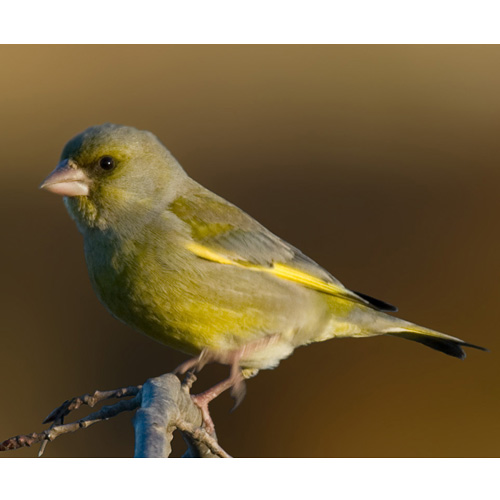
© Andreas Trepte |
Great Spotted Woodpecker
May remind you of: Downy Woodpecker
This common urban woodpecker has a call similar to the “pik” of a Downy Woodpecker, although much louder and more resonant. The Great Spotted Woodpecker, however, is closer in size to a Hairy. Green Woodpeckers—the second most commonly occurring urban “pecker”—has a boisterous, laughing call, so if you hear something that sounds like a woodpecker back home, it’s most likely a Great Spotted. Lesser Spotted Woodpecker is possible, but much less common: listen for a soft, descending whinny similar to a Downy.
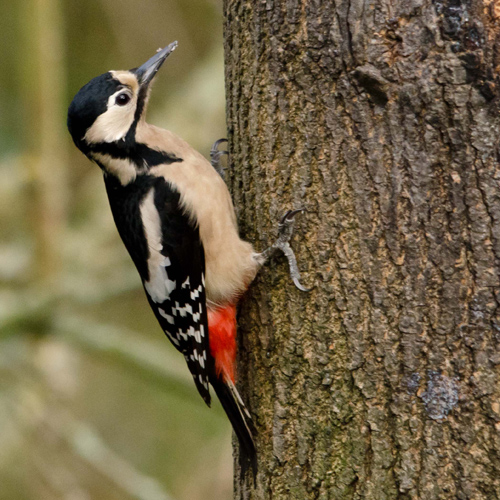
© Darrel Birkett |
Short-toed Treecreeper
May remind you of: Brown Creeper
The “creepers” of Europe maintain the same soft, fluting, liquid-like songs of the Brown Creeper back home. Are you in the U.K.? You’re hearing the long, descending song of a Eurasian Treecreeper. On mainland Europe, you can be hearing Eurasian or the more upbeat, ascending song of a Short-toed Treecreeper.
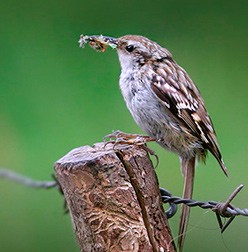
Short-toed Treecreeper © Jimfbleak |
Other Common European Birds
Common Chiffchaff
This widespread phylloscopus warbler has one of the most distinctive songs in Europe: a continuous string of single notes that quickly jump up and down the octave scale. If you watch any European programming that requires the use of bird sounds, you might find him there, too. A few of the audio samples highlighted on this page have Common Chiffchaff somewhere in the background as well.

© Hans Hillewaert |
Eurasian Blackcap
While a plain warbler in appearance, the Blackcap is anything but once it open its beak. Its beautiful song has the length and intricacy of a Winter Wren, the vocal variety of a European Starling, and the boldness of a Northern Mockingbird. Fortunately for visiting birders, they are vocal and widespread in spring and summer, and respond quickly to pishing.

© Jakub Stančo |
European Robin
The song of the European Robin is high and melodious one second, and wheezy the next. To me, it sounds like the male is struggling to get his song out as he inhales and exhales laboriously.
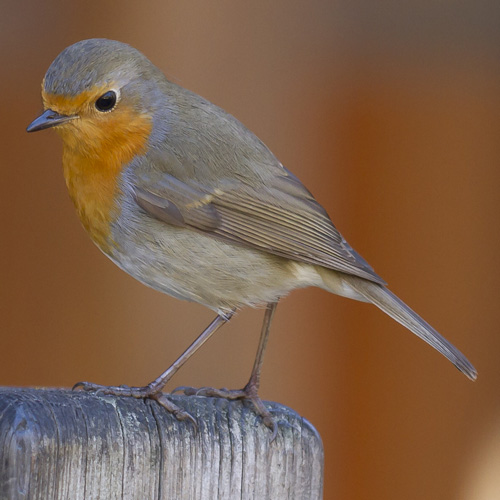
© Pierre-Selim Huard |
European Serin
This urban canary—literally, it’s in the same genus as the wild ancestor to the popular cage bird—doesn’t have the lyrical chops of its fellow Serinus. To me, its song is continuous, metallic chatter, similar in quality to an Anna’s Hummingbird. They are boisterous singers, though, which makes them easy to find. Don’t expect to find them in London, however, as this species is absent on the British Isles.
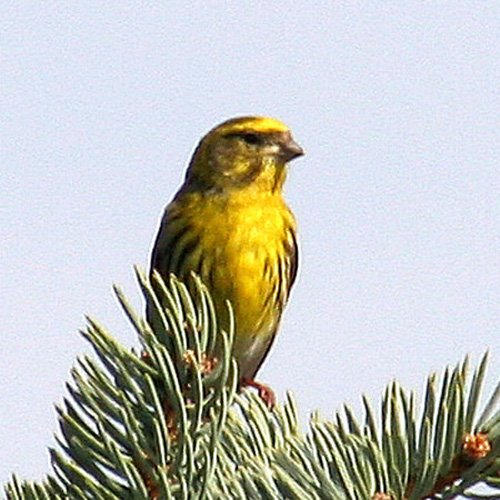
© Armin März |
European Goldfinch
The song of this handsome dandy is a continuous, and often quiet, string of trills and chatter, similar to that of the American Goldfinch. Also like its American counterpart, it’s most easily identified by its call, which it freely interjects into its song: an upslurred “te-LITT.”
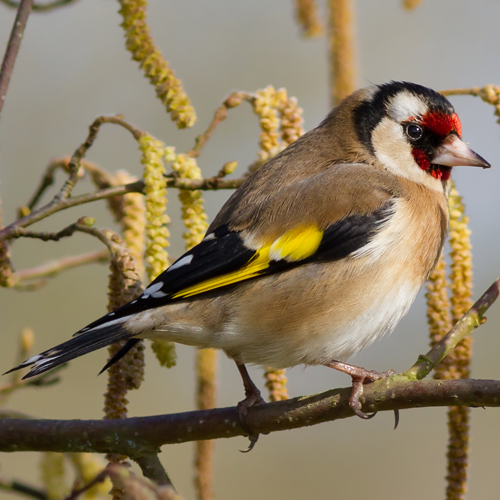
© Pierre Dalous |
Eurasian Nuthatch
The only audible similarity that this nuthatch shares with the Red-breasted in the States is how unique its call is in its respective habitat. To my ears, it sounds like a scolding water drop. And when it decides to call, it will do so quite adamantly, thus making them easy to locate.
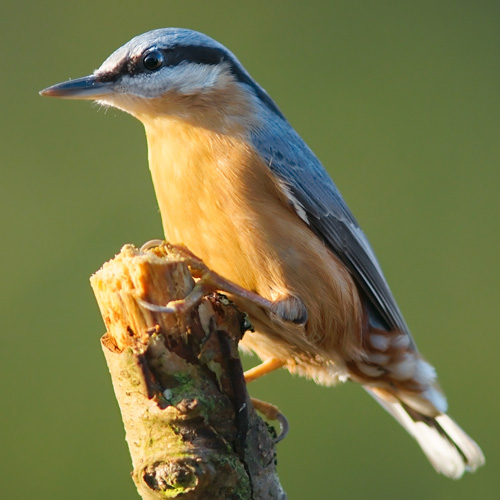
© Luc Viatour |
The Tits (A few of them at least)
Great Tit
The Great Tit has one of the richest vocabularies of any European bird—nearly 40 different call types at last tally—but considering it’s also one of the common urban species, if you hear a bird that you don’t recognize during your outing, chances are good that it’s a Great Tit. Song is usually a see-sawying, ringing, two syllable little diddy.
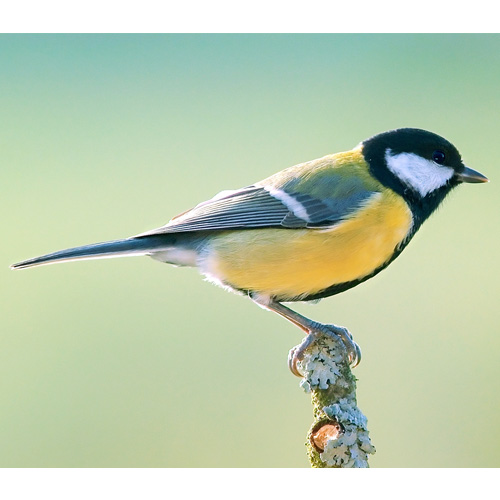
© Luc Viatour |
Eurasian Blue Tit
The second most common tit, if not the second most common species, the Eurasian Blue Tit has a four part song: “DEE-DEE-d-d-d-d-d-DEE-DEE-d-d-d.” The quality is higher and more piercing than that of the Great Tit. Start pishing at any urban green space and you’ll have the chance to hear its scolding call in person, after the Great Tits have come to investigate, of course.
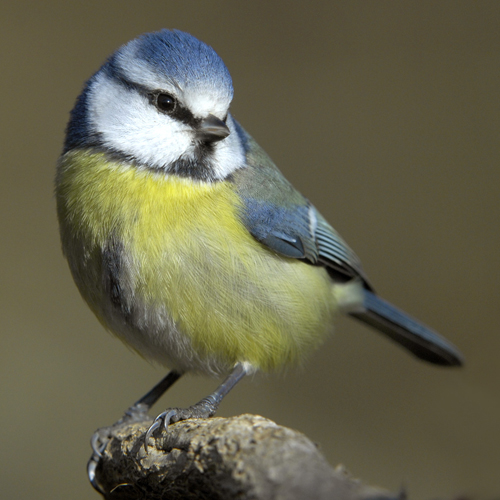
© Maximilian Dorsch |
Long-tailed Tit
Similar in proportion to Bushtits, though larger and more boldly colored, the Long-tailed Tit is readily identifiable by voice. Listen for the very quick, descending, scolding call and wait for the flock to pass through.
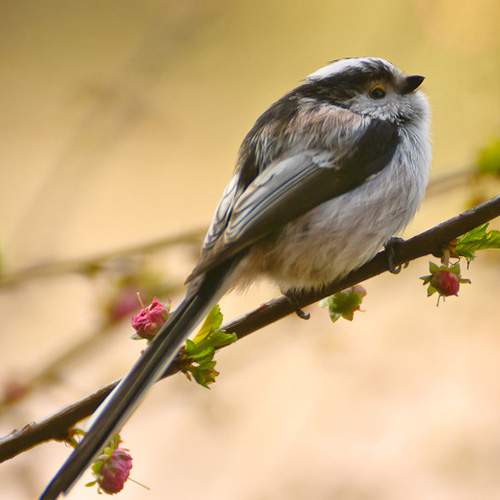
© Jos Dielis |
Marsh Tit
The Marsh Tit will most closely resemble North American chickadees of the tits mentioned here and I find, personally, that its call is one of the most distinct: a quick, ascending two-note “pi-CHAY.”
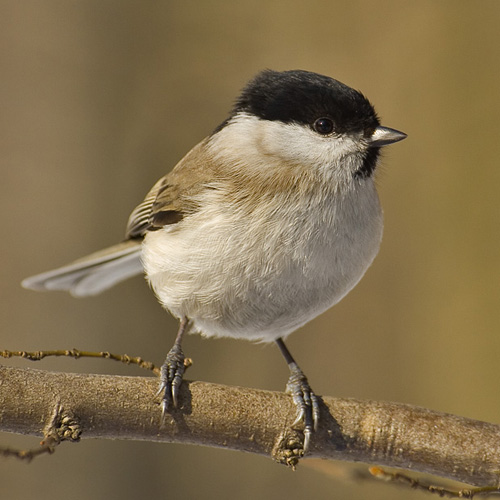
© Sławomir Staszczuk |
Already mastered these species or have a specific target bird you are looking for? Use Xeno-canto.org to find crowd-sourced recordings that you can download to your computer.

